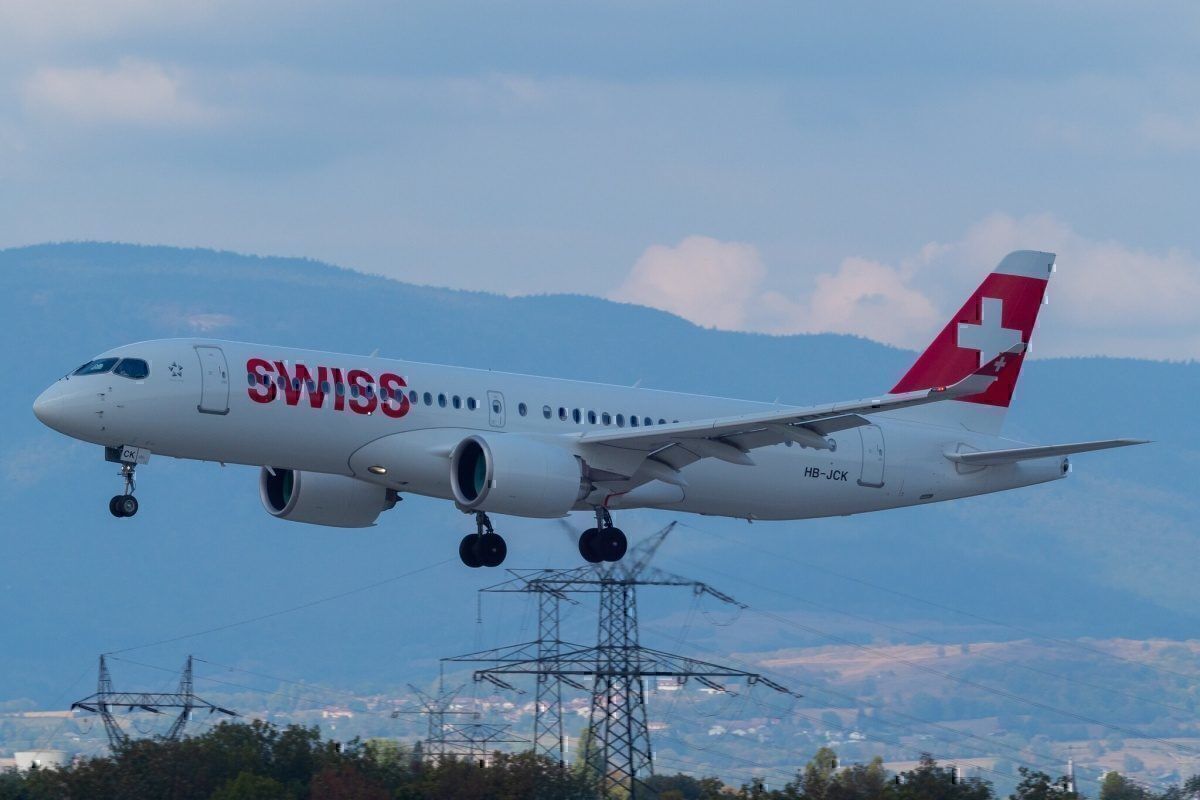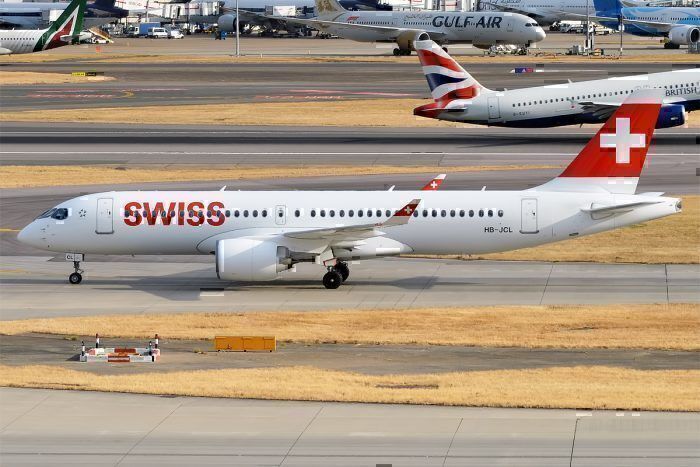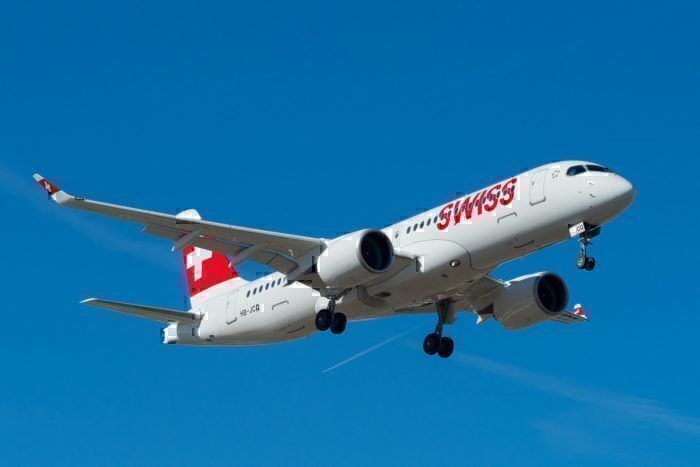A SWISS Airbus A220 was forced to divert to Zurich shortly after take off from Geneva last Thursday. The aircraft was en route to Heraklion, Greece, when the pilots made the decision to divert after the aircraft's fuel inerting system failed.
The Aviation Herald reported yesterday on an unusual issue aboard a SWISS Airbus A220 (Bombardier C-Series CS300) last week.
The 1.4-year-old Airbus A220, registered HB-JCN, set off from Geneva, Switzerland on 10 October, bound for Heraklion Greece. Shortly after takeoff, around 20 nm south of San Marino, the pilots decided to divert to Zurich.
After the first aircraft safely diverted to Zurich, a replacement Airbus A220 was drafted in. Passengers eventually touched down in Heraklion after a delay of four hours.
Last Thursday’s incident is one of a number of recent issues aboard SWISS Airbus A220s. But it stands out due to the cause of the diversion.
Reports suggest that a passenger aboard the flight later received an official statement from SWISS which explained that the flight had been diverted because the aircraft’s fuel inerting system had failed.
If that sounds like an unusual reason for a diversion, it’s because it is. Diversions as a result of issues with a fuel inerting system seem to be virtually unheard of.
What is a fuel inerting system?
A fuel inerting system may sound like an oxymoron. The reason fuel is vital for vehicles and machinery in the first place is the fact it is combustible. If fuel were to become inert, it would serve no practical purpose in an engine.
In this sense, the term ‘fuel inerting system’ is a bit of a misnomer. In real terms, a fuel inerting system doesn’t actually make fuel inert.
These systems are found in fuel tanks in vehicles on land, in water and in the air. If fuel were to ignite inside a fuel tank, it could have disastrous consequences, especially in the air.
In order to decrease the risk of fuel igniting within the fuel tank, an inert gas is pumped in to occupy the space left behind as the fuel is used.
This means that, rather than sitting alongside normal air, which contains oxygen, fuel in the fuel tank will be in contact with an inert gas such as nitrogen or carbon dioxide.
Is this reason enough to divert?
Fuel inerting systems only became an FAA mandatory requirement on commercial passenger jets in 2008.
Since then there appears to have been a distinct lack of aircraft diversions due to issues with fuel inerting systems.
There have, however, recently been a number of incidents aboard Airbus A220s which have subsequently caused flight diversions.
The vast majority of these issues have been related to the Pratt & Whitney PW1500G turbofan engine, which is exclusive to the Airbus A220.
Yesterday, SWISS grounded its entire fleet of Airbus A220s as a safety precaution in order to carry out an inspection of their turbofan engines.
The fleet is now gradually returning to service, but concerns about the Pratt & Whitney engines could explain why last Thursday’s fuel inerting system issue was considered reason enough for a diversion.
Unfortunately, SWISS was not available to respond to Simple Flying’s request for comment on the incident.



